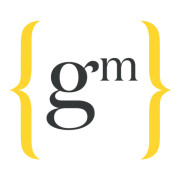Marketing budgets didn’t really budge in 2018, sticking at an average of 11.2% of company revenue, but it looks like things could be set to change this year.
63% of CMOs say that they expect their marketing budget to increase in 2019, according to data from Gartner’s Marketing Technology Survey.
The results of the survey, which collected information from 621 marketing executives in the UK and North America, show that marketing technology is a big issue too, with companies spending 29% of their marketing budget on it last year, compared to 22% in 2017. We could expect to see even more spending on MarTech, as the average spend gets closer to a third of total marketing budgets.
The focus on digital marketing and advertising is another key focus point. Two-thirds of marketing budgets go on digital. Paid and organic search, websites and email marketing feature heavily in CMO priorities, making up 25% of marketing budgets on average. Customer experience, ad personalisation and innovation are all areas receiving support in the development and advancement of digital marketing.
Although there are uncertain times ahead, particularly in the UK, CMOs remain optimistic about the future. But with higher marketing spends predicted, they need to be careful if they want to get the budget that they’re looking for. Ewan McIntyre, the lead author of the CMO Spend Survey and senior director and analyst at Gartner for Marketers, points out the importance of demonstrating value. “Marketing leaders must demonstrate the business value of their efforts amid uncertain times,” he says.
Marketers need to be able to show that the money they spend is returning real results, using key metrics to track performance. Brian Solis, principal analyst at Altimeter Group echoes this, emphasising the importance of providing a more direct link between ROI and business outcomes.
When it comes to measuring results, 12% of CMOs reported that brand awareness was the most important metric that they measure. This is especially crucial in a world of digital marketing and social media, where brand image and awareness is everything. Brand awareness certainly isn’t one of the easiest things to measure, however, but several metrics can be useful. These include measuring direct and referral website traffic, examining earned media value and tracking social media activity.
One area where spending saw a drop last year is in labour. Falling from 28% the previous year to 24%, it could show that perhaps CMOs are focusing more on technology than people. Those in the marketing field might need to consider whether this could impact them. Focusing on improving skills and knowledge related to digital marketing and MarTech could benefit marketing professionals. However, McIntyre suggests that the change isn’t a warning sign that the robots are taking over. He believes that it is a result of how much more complex organizational structure is becoming, with resources and talent being managed in new and different ways.
If marketing budgets are to increase this year, marketing professionals need to be sure that they can demonstrate that their spending is worth it. Getting results that translate to real business outcomes is essential.

